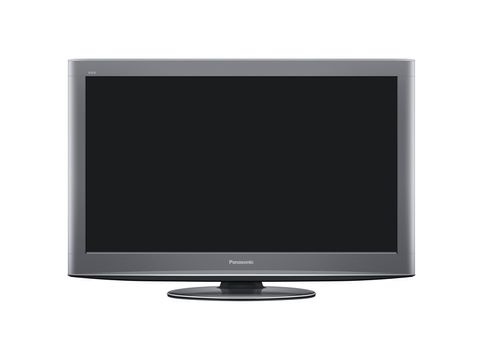Why you can trust TechRadar

As noted in the introduction, the L37V20B is more attractive and slimmer than most of Panasonic's TVs, thanks to its use of edge LED lighting.
It still manages to find the room for a healthy suite of connections on its rear, including four HDMIs, a component video input, a D-Sub PC input, an Ethernet port, two USB slots, and an SD card slot. As you would expect, this sort of connectivity opens up an expansive suite of features.
Perversely, the TX-L37V20, alongside every other Panasonic LCD this year, is not 3D ready. What it does have, though, is plentiful multimedia support. The USBs, for instance, can play back video, photo and music files, make the TV Wi-Fi capable via a provided dongle or else you can use one of them to attach a Buffalo JustStore Desktop HD-EU2-UK HDD for recording video from either of the set's Freeview or Freesat HD tuners.
The Ethernet port is just as flexible, enabling you to stream in files from a DLNA PC, use future interactive services associated with the HD tuners, and access Panasonic's decent – if unspectacular – Viera Cast online service. Highlights include YouTube, Skype video phone calling if you add an optional external camera, EuroSport, and the AceTrax on-demand movie service.
The system is currently let down (compared with some rival online TV platforms) by its lack of any TV catch-up services such as the BBC iPlayer. Panasonic isn't currently showing much interest in app-style functions either, which may need to change if it wants to keep up with its rivals in 2011.
The SD card slot, meanwhile, offers an alternative way of playing the same multimedia files supported by the USB ports. You can't record video onto SD cards, though.
The TX-L37V20's screen is full HD and its edge LED lighting enables an extravagant claimed contrast of 2,000,000:1. Experience suggests, though, that such manufacturers' contrast ratio figures should be taken with even more of a pinch of salt than usual when applied to edge LED technology.
Potentially more interesting is the amount of video processing Panasonic has thrown at the L37V20B. For a start, it's got the very top level of the brand's processing engine, Vreal Pro 5. On top of this there's the most powerful incarnation of Panasonic's Intelligent Frame Creation system, IFC Pro. Obviously, frame interpolation systems like IFC Pro aren't to everyone's tastes, but hopefully Panasonic's will prove at least persuasive.
Video gamers alarmed by the sound of all this processing should note that it's mostly optional, and that a provided Game preset deactivates pretty much all of it to leave you with an acceptable input lag of around 30-40ms.
As well as making most of the processing optional via its onscreen menus, the TX-L37V20B gives you a reasonably large suite of tools for fine-tuning pictures. Just choose the Advanced ISFCC option – found, rather unhelpfully, within an advanced features menu rather than the picture menu – and you'll be free to tinker with such niceties as the hue, saturation, gain and cut-off of the RGB colour elements and gamma settings via a series of presets. There's room for improvement in terms of both gamma and colour calibration, but the set is sufficiently flexible to an endorsement from the independent Imaging Science Foundation (ISF).
Other key features of the L37V20 that help define it as a flagship model are picture in picture options, playback of Deep Colour sources if you find any, and its use of an IPS (In-plane Switching) LCD panel. Such displays are far less prone losing contrast and colour saturation than normal LCD panels when viewed from a wide angle, which is very handy to for anyone with potentially large audiences to cater to.
Current page: Panasonic TX-L37V20E: Features
Prev Page Panasonic TX-L37V20E: Overview Next Page Panasonic TX-L37V20E: Picture qualityAV Technology Contributor
John has been writing about home entertainment technology for more than two decades - an especially impressive feat considering he still claims to only be 35 years old (yeah, right). In that time he’s reviewed hundreds if not thousands of TVs, projectors and speakers, and spent frankly far too long sitting by himself in a dark room.


